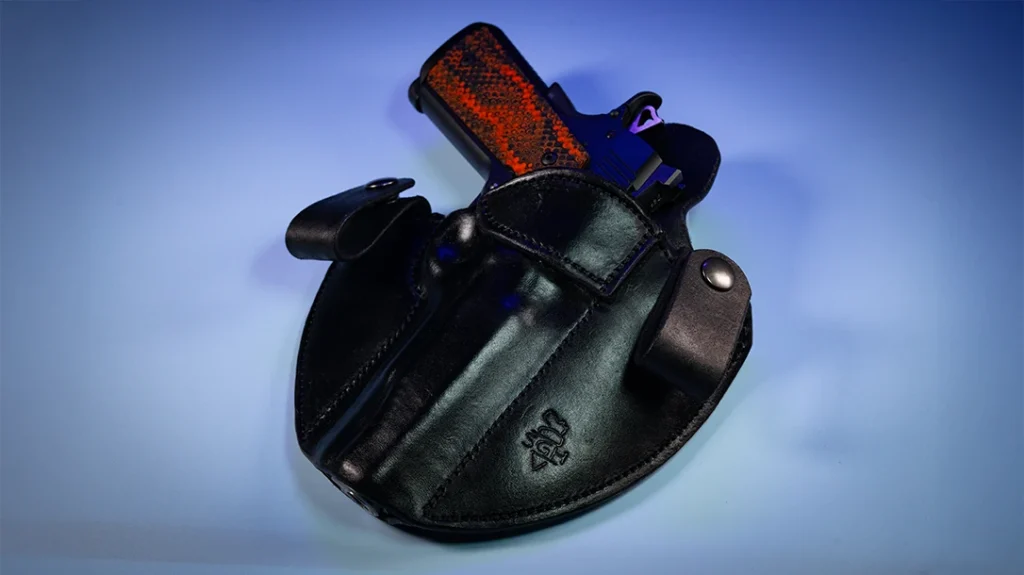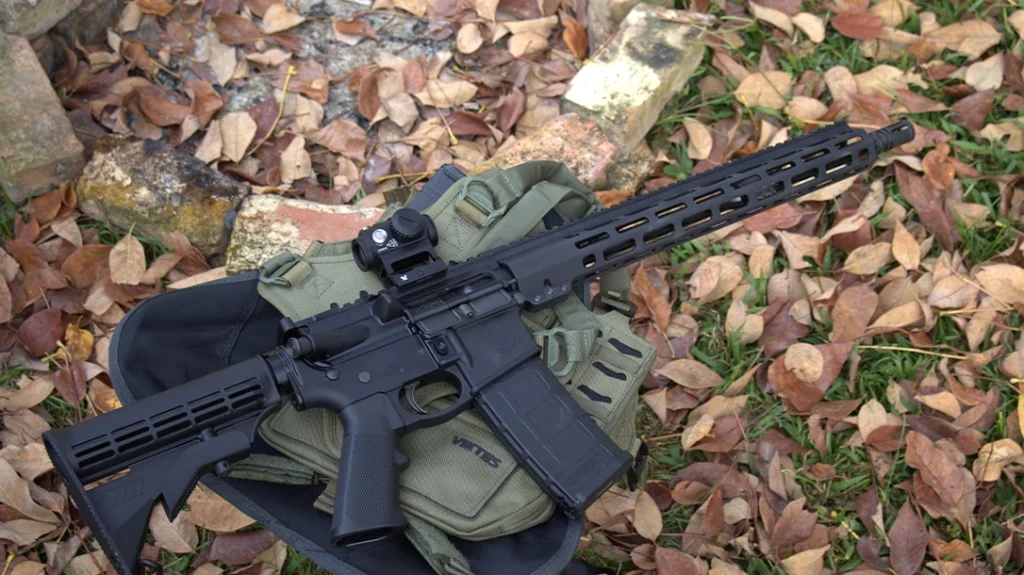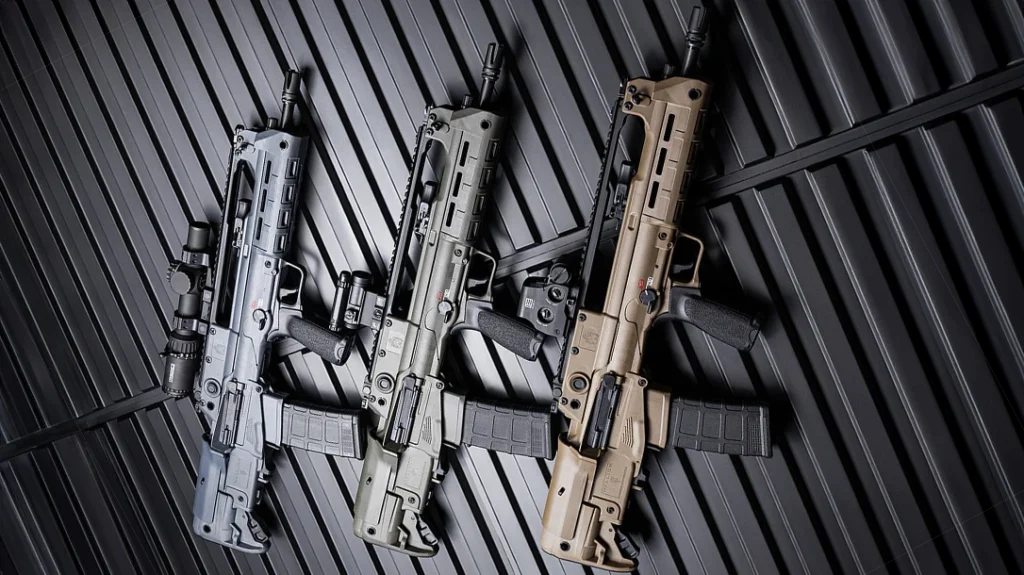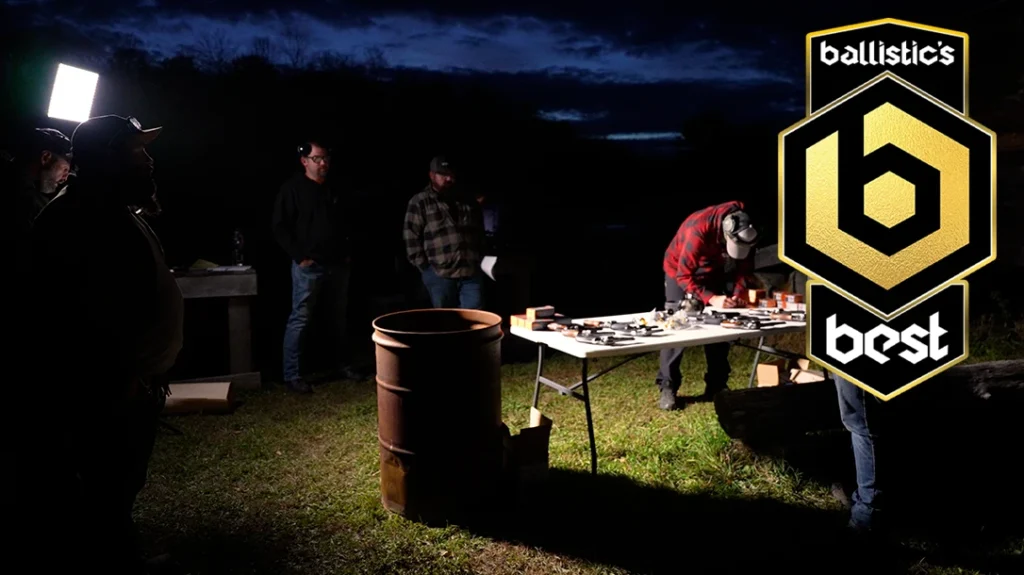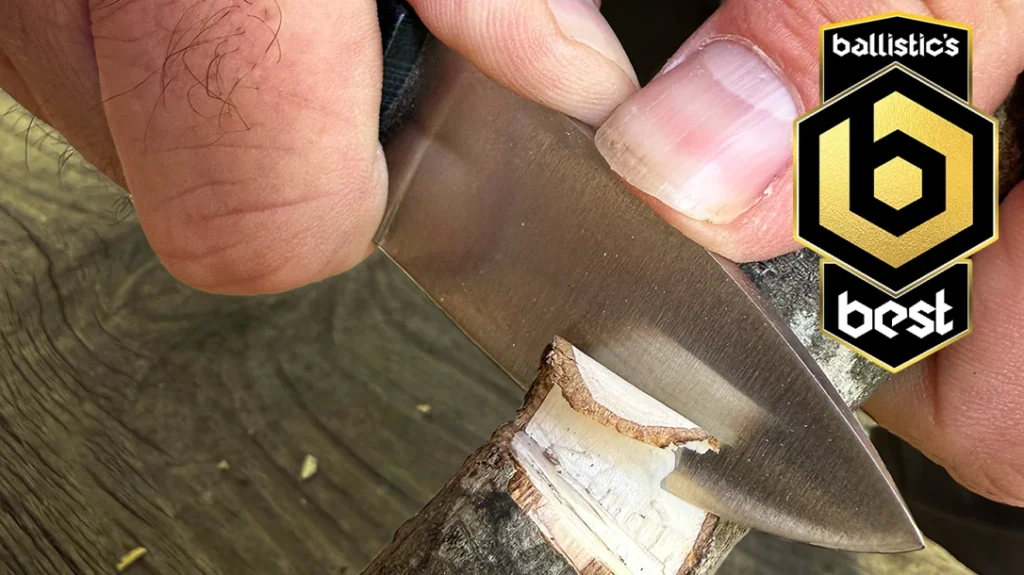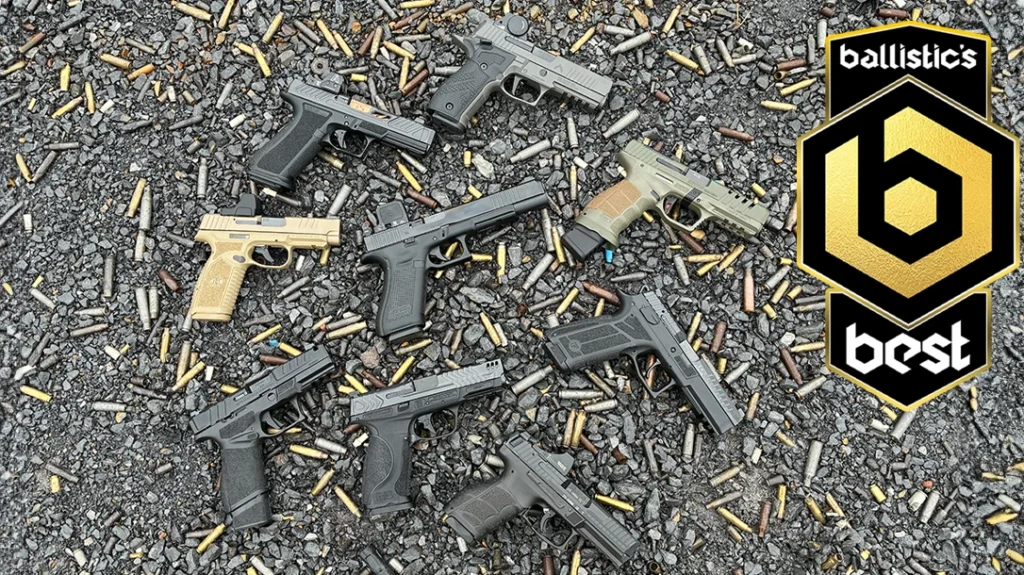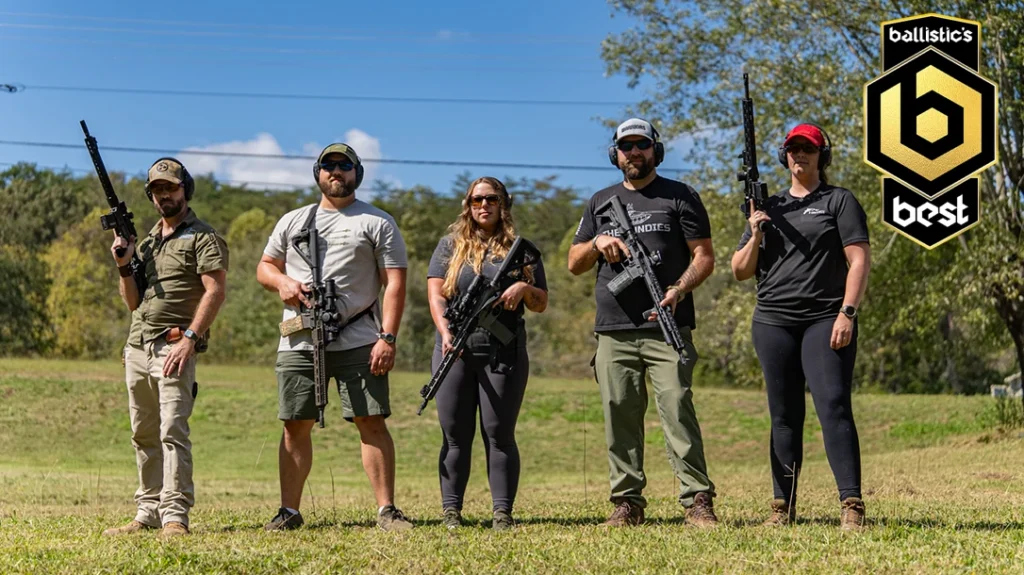After a seeming lull since the mid-1980s, the traditional double-action (DA) revolver appears to be making a comeback. Many companies, like Colt, Kimber, Henry Repeating Arms, and Heritage Manufacturing, each have recent iterations of the platform. Now, Diamondback Arms, which has been making a line of DA/SA .22RF revolvers called the Sidekick, is out with a new compact DA .357 Magnum snub called the SDR (for Self Defense Revolver).
The New Diamondback Arms SDR is a Wild-Looking Wheelgun
When I saw the SDR, my first impression was that it was very “Kimberish,” with an angular look, rear sight dovetailed into the frame, and push-in cylinder release latch. Then, I noted the six-shot cylinder looked very similar to that of the Ruger LCR, with the unusual flutes.
The size and shape of the trigger guard are somewhat “Coltish.” Likewise, on the right side of the frame, at the top of the trigger guard, is a push button. When pressed, it allows quick removal of the captured crane-link cylinder assembly, like the Taurus 692/992 revolver series.
Advertisement — Continue Reading Below
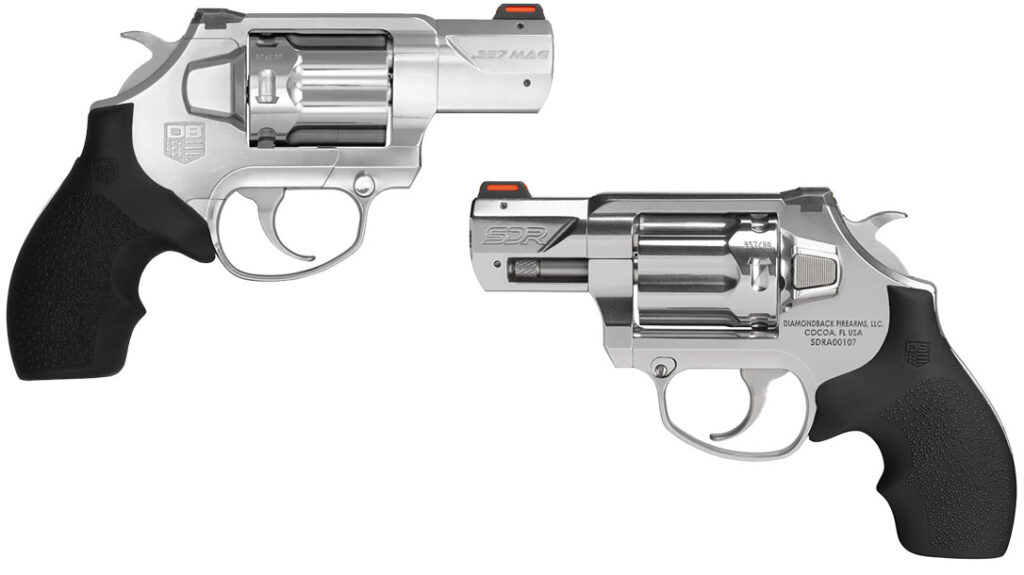
Finally, the cylinder lock-up points are at the rear of the cylinder/breech-face and at the end of the ejector rod—classic Smith & Wesson. Plus, the shape and size of the grip-frame reminds me of the J-frame. So, it seems the SDR is a conglomeration of some of the best features found on other popular revolvers.
All the attributes mentioned above are wrapped up in a solid stainless steel frame, cylinder, and 2-inch barrel. The whole package weighs in at just over 21 oz. In addition, it is chambered in .357 Magnum, which means it will also take .38 Special cartridges.
Advertisement — Continue Reading Below
It has a traditional DA/SA, with a smooth, non-stacking pull weight of 9-11.5 lbs. The SA pull is crisp and breaks at about 3.5 lbs. The trigger itself is smooth-faced and 0.25-inch wide. It has an exposed hammer, with fine serrations on the spur. A transfer bar in the action prevents accidental discharges unless the trigger is deliberately pulled.
The Pistol’s Nitty Gritty
The flat-sided barrel is a full 2.0 inches long and has an integral ejector rod shroud. A 45° precision target crown at the muzzle protects the rifling and preserves accuracy. An orange fiber-optic front sight is pinned to the barrel. I’m not a fan of these sights, but I like the design of this one. It has a solid top that better protects the plastic fiber within.
The rear sight is black, and on either side of the square notch is a green fiber-optic element. They’re both low-profile, and the contrasting 3-dot combination provides a good sight picture that is quickly attained.
Advertisement — Continue Reading Below
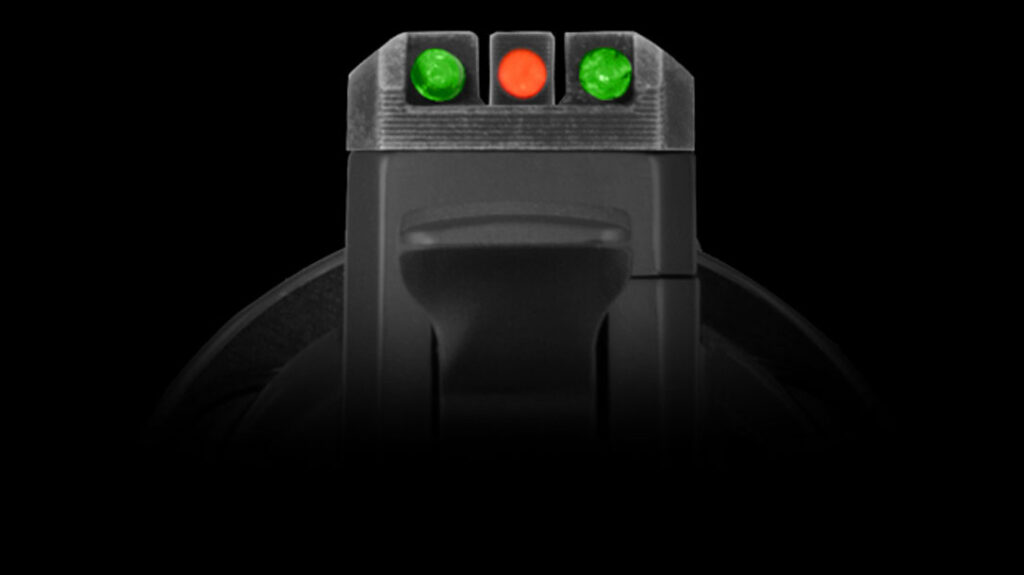
The cylinder is chamfered in the rear, enclosing the cartridge case heads. Its release latch is of a good size and shape and is finely serrated like the hammer spur.
Grips on the SDR are Hogue combat-style, black rubber, branded with the Diamondback logo, and have pebble-grain texturing. The backstrap and butt of the grip frame are exposed.
Advertisement — Continue Reading Below
My sample SDR had an excellent polish job, which gave the sixgun the appearance of nickel plating. In my humble opinion, the markings are stylish and not overdone.
Ammo and Leather for the SDR
While the Diamondback SDR is a .357 Magnum, it weighs 21.2 oz., and the smallish rubber grips gave me some pause. I elected to use two .357 Magnum loads in my T&E, plus three .38 Special loads.
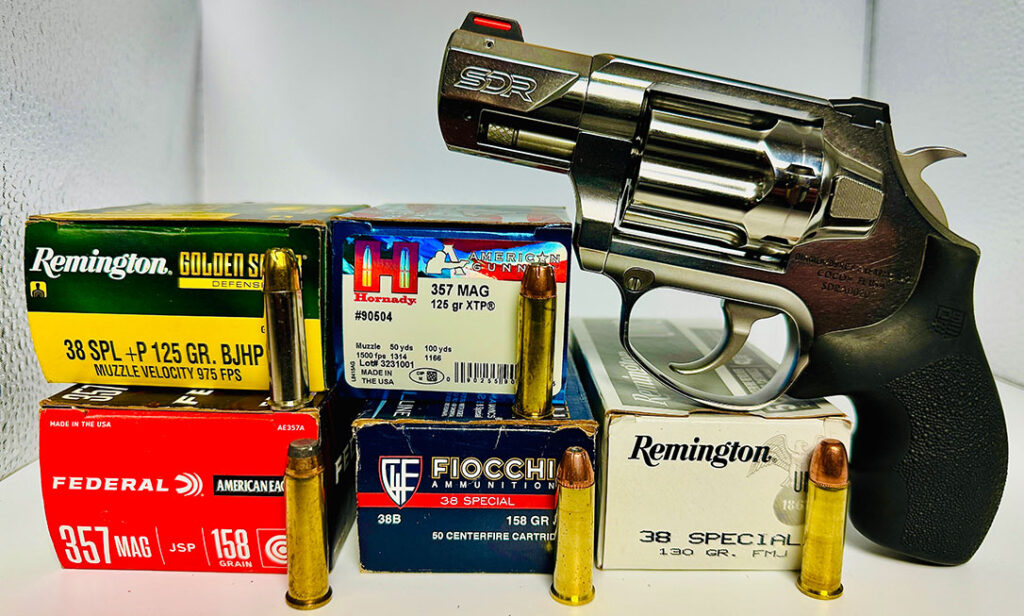
Advertisement — Continue Reading Below
From Federal, I selected the American Eagle .357 round with a 158 gr. JSP bullet. Fiocchi provided some of its .38 Special cartridges with a 158 gr. JHP bullet. My other .357 was Hornady American Gunner, with a 125 gr. XTP-HP bullet.
I had some Remington-UMC .38 Special practice ammo with 130 gr. FMJ bullets. Plus, I used the company’s .38 Special Golden Saber with a 125 gr. brass JHP and rated +P.
Being a “Mossy-backed” old guy who cut his teeth on revolvers and cowhide, I eschew plastic/Kydex holsters, especially for a six-shooter. Instead of a hot-molded wonder, I chose a #172-6D FLETC 2.0 holster/cartridge pouch combo from DeSantis Gunhide.
Advertisement — Continue Reading Below
This holster was developed with the collaboration of the Federal Law Enforcement Training Center. It is constructed of premium saddle leather and is a pancake-style, high-ride, open-top design with a tension screw for security. It rides at a comfortable 15° cant, and an ammunition pouch is attached near the forward belt slot.
The buyer can opt for a 2x2x2 dump pouch or a single-speedloader pouch. This outfit’s color is a rich dark tan with a glossy finish.
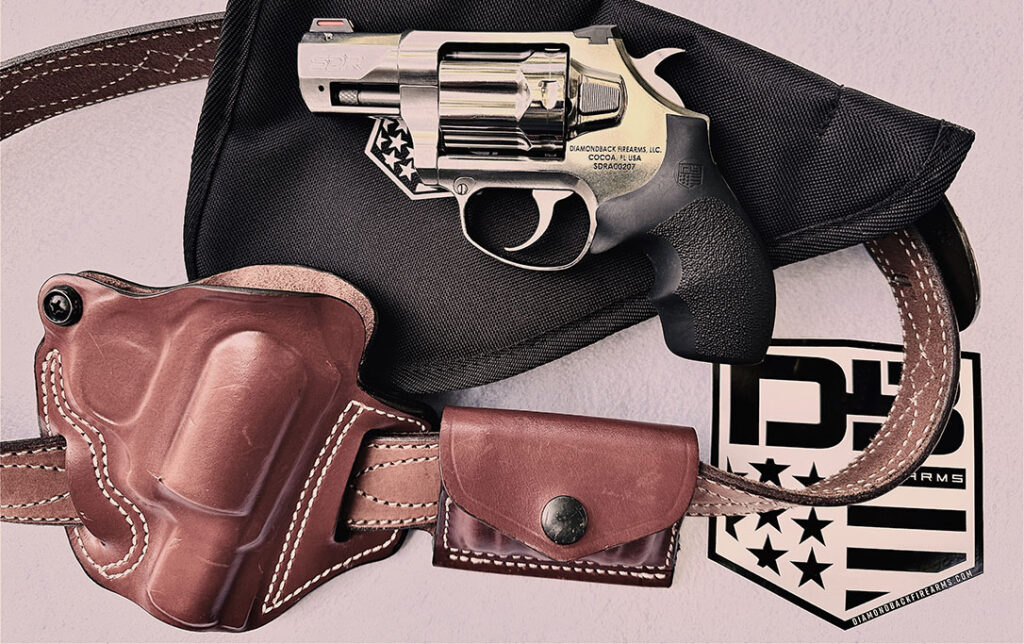
Advertisement — Continue Reading Below
I paired it with a long-serving Bianchi #B12 “Fancy-Stitched” 1.5” belt. It’s made of oil-tanned, full-grained cowhide with a suede lining. Its thickness provides support for handgun carrying. It comes with a brass buckle and a tan or black finish.
SDR T&E at the Range
This has been a very windy, stormy spring in my neck of the woods. However, I decided to still test the SDR properly. I’d do my accuracy potential evaluation at an indoor range, then go outdoors to chronograph the .357/.38 test ammo for velocity measurements. Then, I would do a combat shooting course, which is taboo on most commercial indoor ranges.
I repaired to a local Range USA facility with the gun and gear in tow. Each shooting lane has a table set up, similar to a bench rest, on which I could put my sandbag. I unlimbered my folding stool, took the test ammo from my shooting bag, put on “eyes and ears,” and then sent a multi-bullseye target sheet down to the 10-yard line.
Advertisement — Continue Reading Below
Shooting was done SA, and three 5-shot groups were fired with each of the five test cartridges. As expected, the .357 Magnums rocked my world, and I slipped a shooting glove on my right hand.
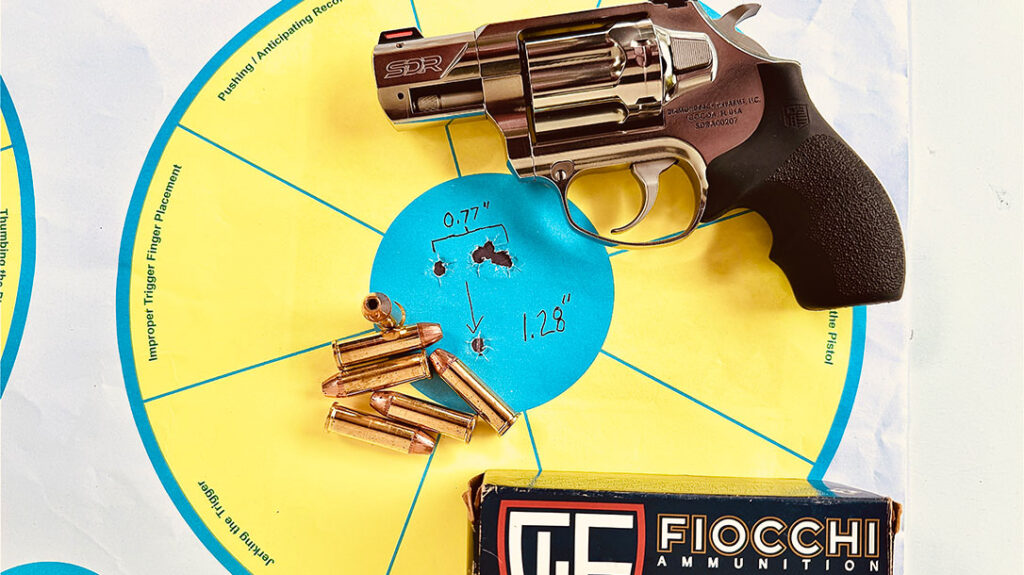
The most accurate load was the Fiocchi .38 Special 158 gr. JHP. I had a 0.77-inch 4-shot cluster until a flyer opened the group up to 1.28 inches, and the group average was 1.79 inches.
Remington-UMS .38 Special 130 gr. FMJ came in second with a 1.41-inch group. The rest of the group data is in the performance table (below). I was pleased that the point of aim/point of impact was good, considering the different bullet weights and velocities.
Running the Revolver Outdoors
At my outdoor shooting location, I performed my chronographing chores (see the performance table below). Then, I proceeded to erect my target stand and attach a realistic “bad guy” target. It had light grey scoring lines, delineating 5, 4, and 3-point zones.
I had seen a close-combat handgun course while recently cruising the web. So, I endeavored to recreate something similar for a snub-nosed revolver. Since I had a good supply of the Remington-UMC .38 Special 130 gr. FMJ ammo, I decided to use it on my course.
I loaded the SDR, then put six rounds in a DeSantis Swift Strip, which works fine in the 2x2x2 pouch.
Self-Defense Drills with the SDR
I moved to the target, standing an arm’s length away, with the revolver holstered. Then, I placed my support hand on the target, simulating pushing back an aggressor, and drew and fired two rounds one-handed. I held the SDR close to my side to prevent a gun grab.
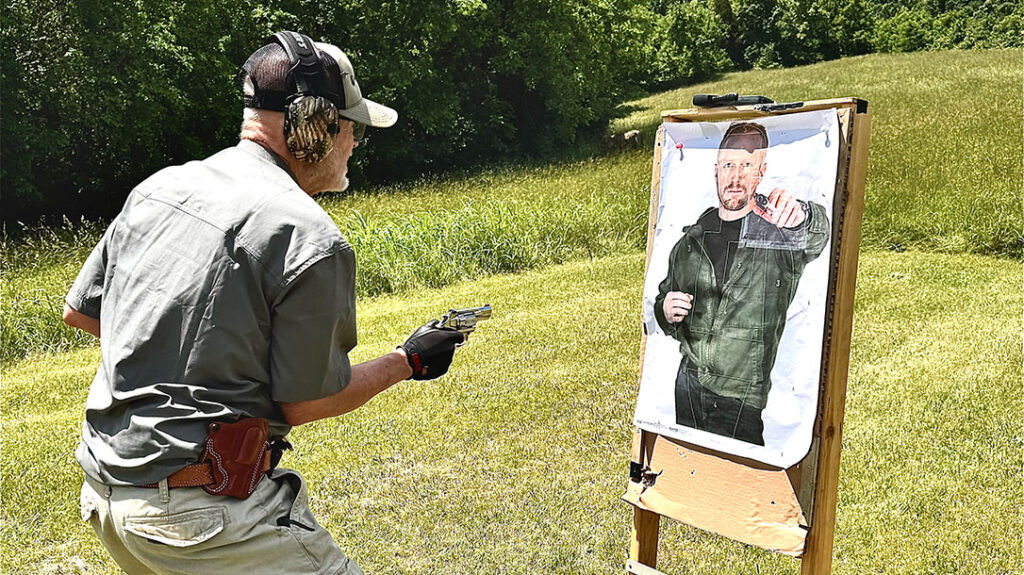
I then moved a step to my right and back two yards. Here, I fired two more rounds, using my strong hand only and raising the weapon to point-shoulder height. Then, I backed off to the 5-yard line, gaining distance, and shot my last two rounds in the same mode as my 3-yard shots.
Now, I retreated to the 7-yard line, sought cover, and did a reload with the Swift Strip. Using the sights, I shot a series of double-taps at this distance, doing a threat assessment after every two shots.
I used another Swift Strip for a reload, then fired two shots center mass and one to the head in what’s called a “failure drill.” I then performed this drill one more time.
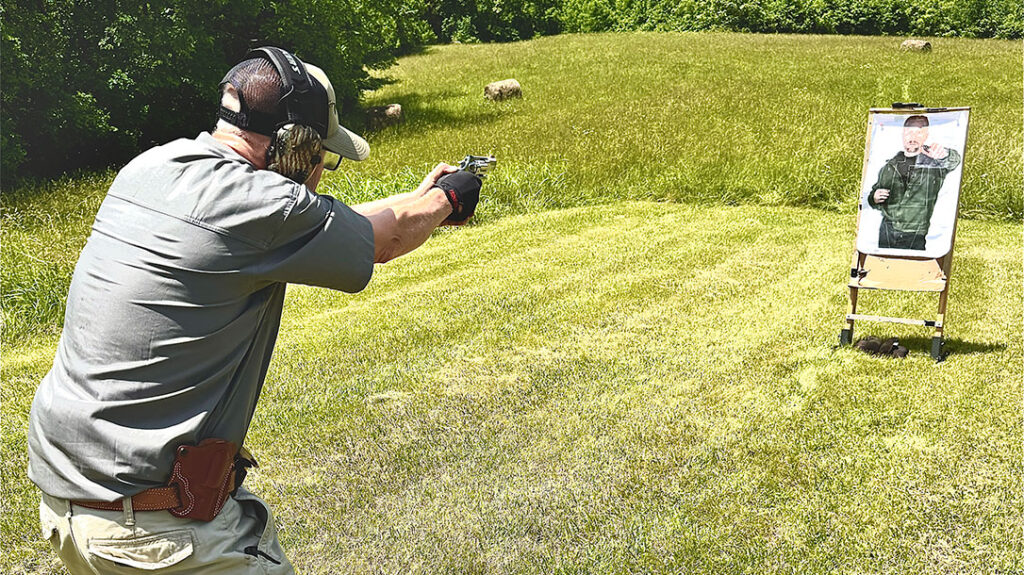
Then, a reload was made behind cover. At 10 yards, I used a folding table to simulate cover and from a kneeling position, shot six rounds from behind the table.
A total of 24 shots were taken, with a possible score of 120 points for all 5-zone hits.
SDR Findings
My score for the snubbie combat course was 107/120. Thirteen of the center-mass shots went out into the 4-zone but were still impacting the thoracic area. My two headshots were both 5’s, touching side-to-side on the bridge of the nose. Not bad for me!
I found the SDR was easy to control in rapid fire with the standard-pressure .38 Special loads.
The .38 Special +P and .357 Magnum loads punished my hand pretty good while shooting bullseyes earlier. This was mostly due to the exposed backstrap of the grip frame. The Hogue rubber grips helped with muzzle flip and aided in natural pointing.
The good news was that the cylinder release latch never lacerated my thumb joint. In addition, the sights were easy to acquire, and the glowing fiber optics provided an outstanding “flash” sight picture.
I had no issues with the DA trigger pull in rapid fire, and the short ejector rod punched out the spent cartridge cases without fail. The Swift Strips, holster, cartridge pouch, and belt all performed famously. With the quick-release cylinder assembly, I’d like to see an optional 9mm cylinder unit.
All-in-all, the Diamondback SDR ran in top form, and I would not hesitate to carry it as my EDC.
For more information, please visit DiamondbackFirearms.com.
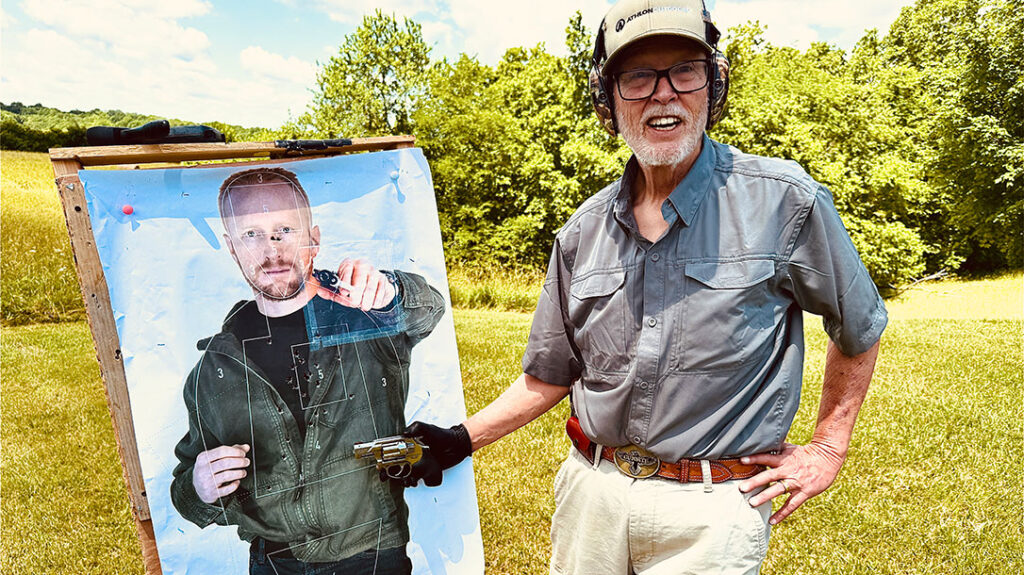
Diamondback Arms SDR Specs
| Mechanism | Traditional DA/SA revolver w/transfer bar |
| Caliber | .357 Magnum/.38 Special |
| Capacity | 6 cartridges |
| Barrel | 2.0 in. |
| Overall Length | 6.53 in. |
| Empty Weight | 21.20 oz. |
| Sights | Fiber-optic front, fixed fiber-optic rear |
| Finish | Polished stainless steel |
| Stocks | Hogue DB Arms-branded, black rubber |
| MSRP | $777.00 |
Performance
| Cartridge | Ave. Velocity | Best Group | Average Group |
| Federal American Eagle .357 Mag. 158 gr. JSP | 934 FPS | 1.49” | 2.08” |
| Fiocchi .38 Spl. 158 gr. JHP | 713 FPS | 1.28” | 1.79” |
| Hornady American Gunner .357 Mag. 125 gr. XTP-HP | 1172 FPS | 2.15” | 2.38” |
| Remington-UMC .38 Spl. 130 gr. FMJ | 756 FPS | 1.41” | 1.90” |
| Remington Golden Saber .38 Spl. +P 125 gr. BJHP | 819 FPS | 1.92” | 2.22” |
NOTE: Bullet weight measured in grains, velocity in feet per second 10 ft. from the muzzle by an Oehler Model 35P chronograph, and accuracy in inches for three 5-shot groups at 10 yards.

